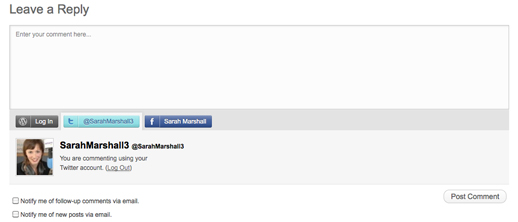Google has launched a social network with some Facebook-like features. Google+ (plus) is open by invitation only to a very limited number of people while it is in the field test stage but Google has released details on its blog as to how it works.
One of its features is called ‘circles’, which allows users to categorise contacts and only share items with particular groups such as close friends and family but opt to exclude work contacts.
According to the New York Times, this is the “one significant way” in which Google+ is different from Facebook and the way “Google hopes will be enough to convince people to use yet another social network”.
It is meant for sharing with groups — like colleagues, roommates or hiking friends — not with all of one’s friends or the entire web. It also offers group text messaging and video chat.
A post on Poynter points out the most interesting area for news organisations are the ‘stream’ and ‘sparks’.
The stream functions a lot like Facebook’s news feed — a flow of information shared by your friends. If Google+ grows to critical mass, news providers could find it very important to get their content into the stream.
The ‘sparks’ section is a bigger innovation. Essentially, sparks are topics that users designate an interest in. Google uses Google+ sharing activity and +1s, as well as its famous search algorithms, to recommend personalised content for each spark, according to Mashable.
Poynter’s post suggests the Google +1 button, which has received a less than lukewarm reception from news sites, could now come into its own.
Suddenly the +1 button makes more sense. Google announced +1 in March as a way for users to express approval of any web page. Now it seems the +1 button will infuse not only search results, but also sparks, with social recommendations. TechCrunch interviewed Google officials about Google+ and reports: “You’ll see a +1 button on all Google+ content — the +1 button clearly ties deeply into all of this. It is going to be their Facebook ‘like’ button.”
So Google appears to have released its tweet or like button before the social network to share it. A case of the cart before the horse?
Poynter’s post goes on to assess the potential usefulness of Google+ and how it could affect news consumption and delivery. It also states that there has been much scepticism about its success, following less successful attempts with social projects Google Buzz and Google Wave, but author Jeff Sonderman suggests there is hope for Google+.
It’s fair to say that Google+ appears to be different, more comprehensive and more well-planned than any previous effort. The design is great, the ideas sound good and the company is making a large commitment to success.
Marshall Kirkpatrick from ReadWriteWeb has tried it out – and he is impressed, describing it as a “smart, attractive, very strong social offering from Google”.
It is well worth reading his post after he spent a night with the new social network.
But the New York Times argues its Google+ project, which has seen huge investment, may have come too late
In May, 180 million people visited Google sites, including YouTube, compared with 157.2 million on Facebook, according to comScore. But Facebook users looked at 103 billion pages and spent an average of 375 minutes on the site, while Google users viewed 46.3 billion pages and spent 231 minutes.
Advertisers pay close attention to those numbers — and to the fact that people increasingly turn to Facebook and other social sites like Twitter to ask questions they used to ask Google, like a recommendation for a restaurant or doctor.
The article goes on to explain why Google+ has now come at this time, long after Facebook’s creation.
Larry Page, Google’s co-founder, regrets Google’s failure to lead in this market and has spent time working with the team since he became chief executive in April, people at the company say. He promoted [Vic] Gundotra to senior vice president this year, placing him on an equal level with the heads of Google’s core products like search and ads.
Part of the blame, analysts say, falls on Google’s engineering-heavy culture, which values quantitative data and algorithms over more abstract pursuits like socialising.
The consensus of blog posts seems to be another positive cultural shift for Google is strong design, as the Next Web reports.
Google+ and all that falls under its umbrella looks good — really good. The trademark minimalism is still present, but it’s been done with style (is that contradictory?) and is something to be appreciated.
That’s because interface designer Andy Hertzfeld, member of the original Apple Macintosh team, was given free reign over design decisions, AppleInsider reports.
Despite the headline, Hertzfeld is quoted in the piece describing the process and it seems he was not so much given free reign as he took it. “Better to ask forgiveness than permission” and so on.
Hertzfeld was worried that Larry Page wouldn’t like it with its animations and drag-and-drop fanciness, but “he loves it”.
A video overview from Google explains how Google+ works
What other news outlets have reported:
Telegraph: Google+ explained
Telegraph: Google+ takes on Facebook
Mashable: Google+: first impressions
Mashable: Google launches Google+ to battle Facebook [pics]
Gigaom: Why Google+ won’t hurt Facebook, but Skype will hate it
Guardian: Google+ launched to take on Facebook
Poynter: Google+ sparks interest in new system of news discovery
TechCrunch: That was quick: Chrome extension adds Facebook, Twitter sharing to Google+
The Drum: Google+ launched as fresh rival to Facebook
ReadWriteWeb: First night with Google Plus: This is very cool
NY Times: Another try by Google to take on Facebook
TechCrunch: While we await the native app, the Google+ iPhone mobile web app is pretty solid
The Next Web: Wondering why Google+ actually looks good? Thank Andy Hertzfeld





